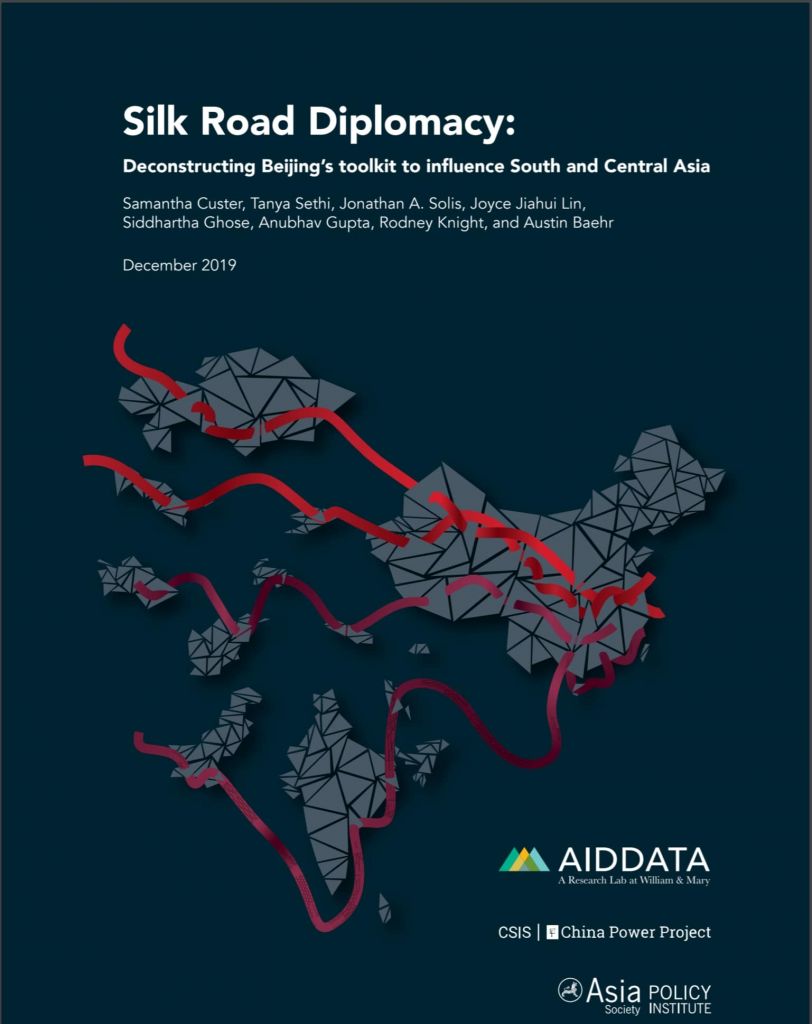Introduction: Quantifying Beijing’s public diplomacy overtures and influence in South and Central Asia
Beijing’s fixation on projecting an attractive vision of itself to the rest of the world is not unique to China: states have long practiced the art of public diplomacy in a bid to win favor with citizens and officials in other countries and thereby advance their national interests (Helmers, 2016). In this vein, Chinese leaders are mindful of the need to expand the government’s public diplomacy capabilities to effectively manage negative reactions to its growing economic and military strength over the past two decades, as well as to win friends and allies to realize its global ambitions (Zhang, 2018; Liu, 2017; Cheng, 2016).

Chinese President Xi Jinping’s signature foreign policy projects, most notably the Belt and Road Initiative (BRI), have attracted speculation among those who view this as a strategic pivot away from the cautious “hide and bide philosophy” of his predecessors (Economy, 2019; Yan, 2014; Nie, 2016). However, this obscures the fact that Beijing’s interest in managing its global image was equally shared by Xi’s predecessor President Hu Jintao since the mid 2000s and enjoys widespread support among government officials and Chinese Communist Party (CCP) members (Fitzgerald, 2018; Shambaugh, 2018).
Beijing’s aspirations may be global, but it takes a special interest in cultivating closer relations within China’s “greater periphery,” 1 including the 13 countries of South and Central Asia 2 that are the focus of this particular report (Swaine, 2014; Li and Zheng, 2016). Chinese leaders are keen to avoid instability in neighboring countries that could spill over into unrest at home. Moreover, Beijing wants to project strength in order to check the influence of its regional rivals, India and Russia. Finally, Chinese leaders view many of the countries in the region as suppliers of raw materials China needs to fuel its economy, markets for Chinese goods and investment, as well as transit nodes to access lucrative markets in Europe.
Beijing is not well positioned to achieve these myriad aims through conventional military means and the country’s western region is comparatively underdeveloped economically to its populous coastal areas. As Scobell et al. (2014) note, the Chinese government’s “defense posture is heavily skewed towards the east” and Beijing instead relies upon an “empty fortress strategy” to project strength with SCA countries in order to “mask serious frailty.” In this respect, public diplomacy is a critical ingredient in Beijing’s toolkit to neutralize potential threats, overcome internal disadvantages, and outmaneuver regional competitors who could vie with the Chinese government for influence. As international relations
scholar John Arquilla (Nye, 2014) puts it, “in today’s global information age, victory may sometimes depend not on whose army wins, but on whose story wins.”
In this report, the authors aim to illuminate which tools Beijing deploys, with whom, and to what effects in the South and Central Asia (SCA) region. To this end, AidData—a research lab at William & Mary—in collaboration with the Asia Society Policy Institute (ASPI) and the China Power Project of the Center for Strategic and International Studies (CSIS), collected an unprecedented amount of qualitative and quantitative data on Beijing’s public diplomacy in the SCA region from 2000 through 2018. We hypothesize that as the Chinese government increases its public diplomacy overtures with SCA countries, this should be associated with more favorable popular perceptions of Beijing in the region and closer alignment with Beijing in SCA leaders’ policy decisions.
In the subsequent chapters, we put this hypothesis to an empirical test—quantifying the volume and composition of Beijing’s public diplomacy toolkit in the SCA region (Chapter 2), examining how these overtures are perceived on the ground in six countries (Chapters 3 and 4), assessing how Beijing’s public diplomacy inputs are correlated with the outcomes it hopes to achieve (Chapter 5), and capturing lessons learned and implications for the SCA region in future (Chapter 6). In the remainder of this chapter, we provide further detail on how we will conceptualize (Section 1.1) and quantify (Section 1.2) Beijing’s public diplomacy overtures.